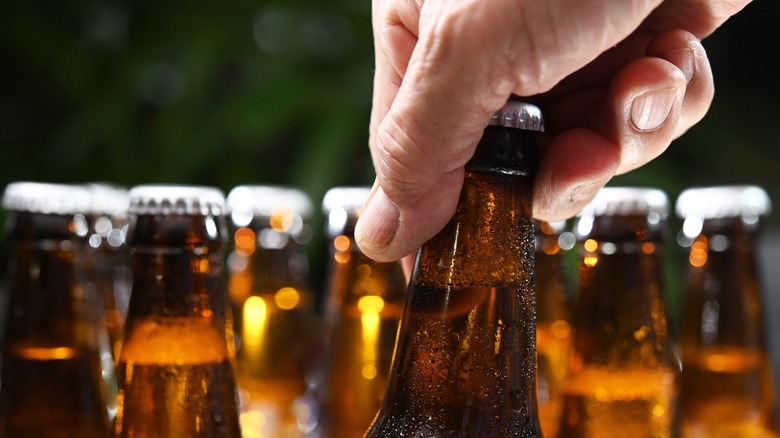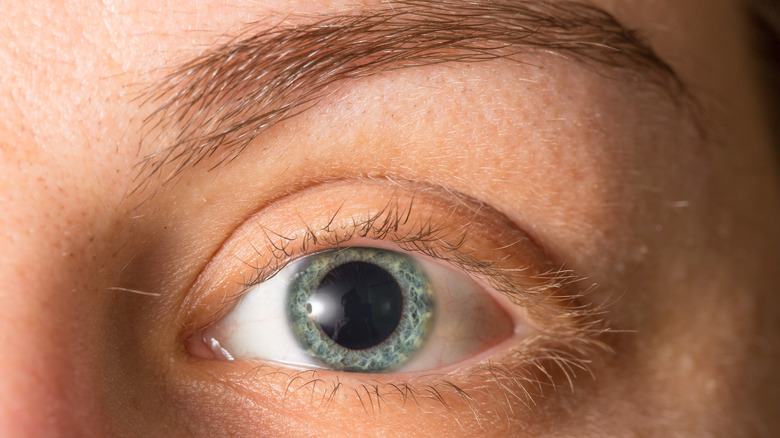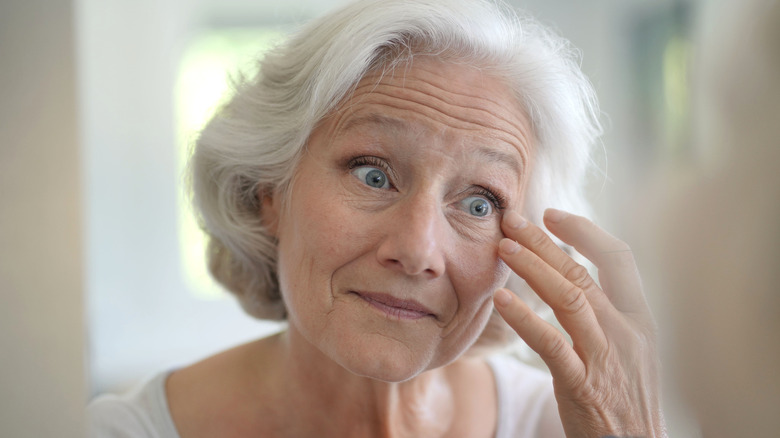Despite how they may look, blue eyes do not actually contain any blue pigment. Rather, it’s melanin that is responsible for our eye color and those with sky-blue eyes have less of it compared to people with green eyes, hazel eyes, and dark eyes, according to 2024 research published in Missouri Medicine. Structures known as “melanosomes,” which harbor melanin, are found in the cells of the iris. Fewer melanosomes means that more blue light is reflected, giving blue eyes their icy, aquamarine appearance.
The legacy of blue eyes can be traced back to one single person. Research indicates that early humans possessed brown eyes; but, between 6,000 and 10,000 years ago, a gene mutation produced the first human with blue eyes. This mutation is thought to have stuck around, with all blue-eyed individuals now possessing the variant.
The American Academy of Ophthalmology reports that an estimated 27% of Americans have blue eyes. These individuals tend to be prone to light sensitivity, but there’s a larger health issue that has also been seen in connection with blue eyes: alcohol use disorder (AUD).
People with blue eyes may be more prone to AUD

Diagnostic criteria for AUD include the use of greater amounts of alcohol for a longer period of time than planned, difficulty minimizing alcohol use, developing a tolerance, and experiencing withdrawal symptoms (via Missouri Medicine). Certain risk factors may increase one’s risk for alcohol dependency, such as frequent overconsumption of alcohol, having a family medical history of the condition, or having a partner who routinely drinks alcohol (via Mayo Clinic). Those with mental health conditions, such as anxiety or depression, may also be more prone to AUD. Researchers point out that seasonal affective disorder (SAD) — another condition involving depression symptoms — has also been linked with AUD risk.
Another potential risk factor to consider may be having blue eyes. Some blue-eyed celebrities have spoken openly about their experience with alcohol use, including stars Brad Pitt, Daniel Radcliffe, and Zac Efron (via Gateway Foundation). Experts suggest that there may be several explanations for the connection.
People with blue eyes are also less sensitive to alcohol

In a 2001 study published in Personality and Individual Differences, researchers examined records from the Georgia Board of Pardons and Paroles in reference to more than 10,000 white male inmates. In their assessment of eye color and rates of alcohol abuse (as worded in the study), the researchers found that those with light eyes reported substantially greater alcohol usage than those with dark eyes. In the second part of the study, the researchers looked at survey responses from 1,862 white women and found the same relationship between alcohol use and women with light eyes.
One potential theory the researchers highlighted is that individuals with dark eyes appear to have an increased physiological sensitivity to drugs compared to people with light eyes. For example, eye specialists have found that the pupils of dark-eyed individuals become more dilated when exposed to drugs than those of people with light eyes. Experts believe that having heightened involuntary bodily responses such as this may prevent people with dark eyes from drinking to excess. Oppositely, those with light eyes may drink more alcohol before experiencing these responses, making them more susceptible to alcohol use disorder (AUD).
Genetics may play a role

Drazen Zigic/Getty Images
The association between increased alcohol use and light eyes may also be related to differences in neuron-firing speed (via Personality and Individual Differences). Melanin sheaths act as a protective cover for the connecting cables of our neurons. The more melanin we have in the front layer of the iris as well as in our central nervous system, the faster our neurons fire and can communicate with the brain. Compared to those with dark eyes, people with light eyes produce less melanin.
Researchers from a more recent 2024 study published in the American Journal of Medical Genetics: Neuropsychiatric Genetics (Part B) zeroed in even further on specific eye colors in relation to alcohol dependency. Compared to people with dark brown eyes, those with light eyes had higher rates of alcohol dependency. This included individuals with grey, green, and blue eyes, as well as those with brown in the middle of the eye. The strongest correlation was observed in people with blue eyes. While the study team emphasized that the exact cause of this connection remains unclear, they noted that it may have to do with two specific genes that reside close to each other on the same chromosome; one being responsible for eye color and the other being related to heightened alcohol tolerance.
If you or anyone you know needs help with addiction issues, help is available. Visit the Substance Abuse and Mental Health Services Administration website or contact SAMHSA’s National Helpline at 1-800-662-HELP (4357).




